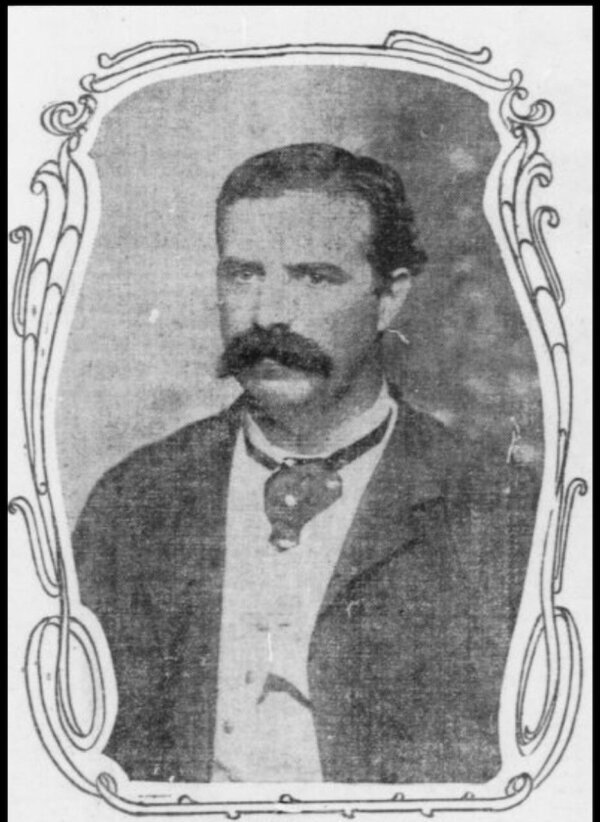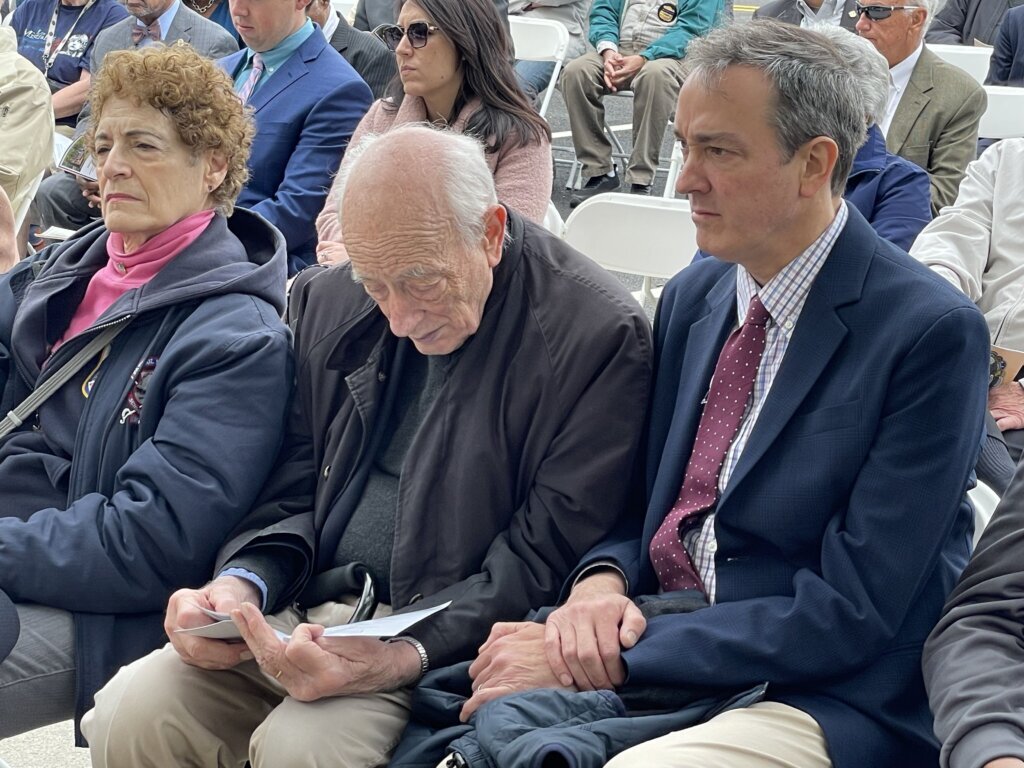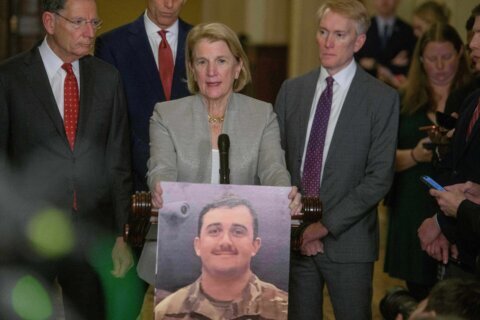
A new D.C. memorial wall dedicated to police officers killed in the line of duty is now complete, unveiled in a ceremony full of public officials and law enforcement leaders on Monday.
But as the names of 125 officers were read aloud, a father and son stood up in honor of an officer killed in the early 1900s, and everyone in the audience wanted to know their story.
“Well, I’ve known about my great-grandfather since I was a little kid,” Robert Rinehart said.
Rinehart’s family has proudly been in D.C. for seven generations, and now his family’s loss of police Officer John Jacob Smith in 1904 is publicly being honored. Smith’s name is inscribed on the newly unveiled memorial wall with each officer the department has lost since its creation by President Abraham Lincoln sixteen days after the Battle of Bull Run, on Aug. 6, 1861, according to D.C. police.
Smith was the oldest D.C. officer to die while serving,

Rinehart said. At 62-years-old, he was nearing retirement and had what Rinehart called an easy job at that point in his career.
“He was guarding the old Aqueduct Bridge, where the Key Bridges is now. And it was the Fourth of July, 1904, and it was very warm,” Rinehart recalled from stories passed down.
Rinehart’s son, Ben, has taken to researching his great-great-grandfather’s career, even looking up newspaper articles from the “Evening Star” and the “Washington Post” that name him as an officer who worked specific cases at the time and mapping his work throughout the city. He spent a lot of his career patrolling in Shaw.
“There was, some very interesting, interesting situations. Including, he once apprehended a guy from Baltimore who came to Washington to assassinate the president. And he was a deranged fellow, a young man in his 20s … He grabbed him and they arrested him. And that was that and carted him off to I don’t know, somewhere. But it was a very violent city in those days,” Ben Rinehart said.
As the family history goes, Smith joined the force around 1870 and was assigned to the Georgetown precinct, later moving to Georgetown’s T Street.
He also served as part of the White House detail, which was a responsibility of D.C. police at that time.
“In fact, we have notes from Mrs. Cleveland, thanking him for giving them a turkey. And also my grandmother used to walk over to N Street and play with Abraham Lincoln’s grandchildren. Robert Lincoln’s house was on N Street,” the elder Rinehart recalled being told.
And on the bridge that fateful Fourth of July night, the men said Officer Smith was trying to get some soldiers from Fort Meyer who were watching the fireworks and being impolite to a group on the bridge to move along.
“And they kept doing it. So he went back and was a bit more insistent. And one of the soldiers pulled a pistol and shot him at point-blank range,” the elder Rinehart said.
Though shot with a wax plug bullet, what we’d now call a blank, the shot caused injury and Smith died at Georgetown Hospital three days later. His killing set up a highly-anticipated trial covered by the press at the time.
“There was a court case — it was a very dramatic court case — about a month later. And it was the U.S. Army with their attorneys against D.C. police with their attorneys. And he was acquitted,” said Ben Rinehart. “They found his revolver. He threw it in the canal. They found it, returned it to him. And totally got off, nothing — no penalty for that at all.”
The new memorial wall and renovated fountain that sits between D.C. Superior Court and D.C. police headquarters were unveiled Monday, May 1. Chief of Police Robert Contee remarked on the importance of a memorial to service members to their family members.
“This memorial is part of our grieving process. It honors those we lost far too soon. It reminds everyone who sees it, how courageous each person on this wall is,” Contee said.
“Each one of these inscribed names represents a lost officer and a story. Some of their lives were lost to gun violence, others to assault or illness. Despite the cause, they will be honored by this memorial fountain and wall for years to come.”
The Rineharts, like other families of fallen D.C. officers, hold their patriarch’s reputation dear and are pleased to see his sacrifice honored at the renovated memorial downtown.








